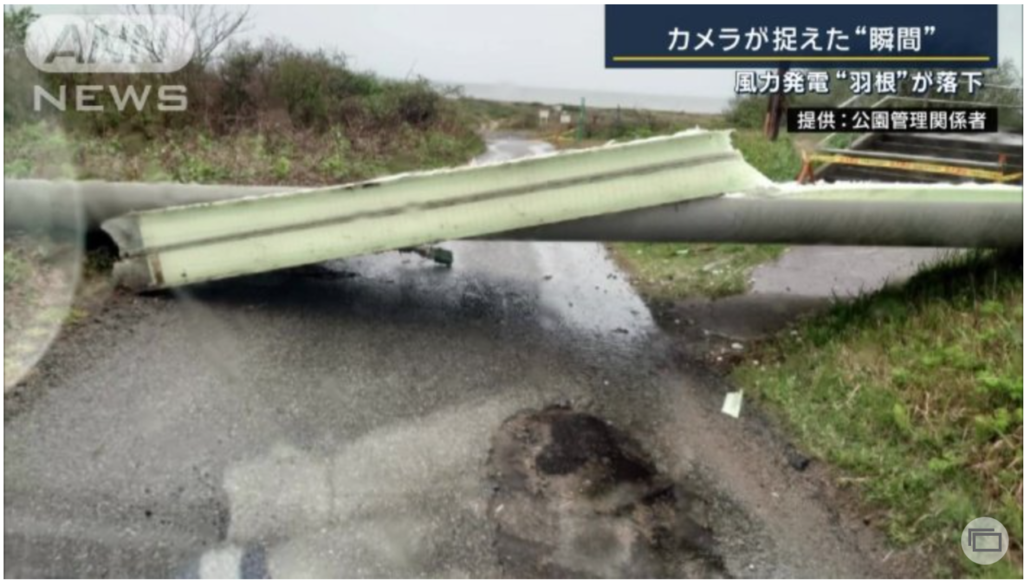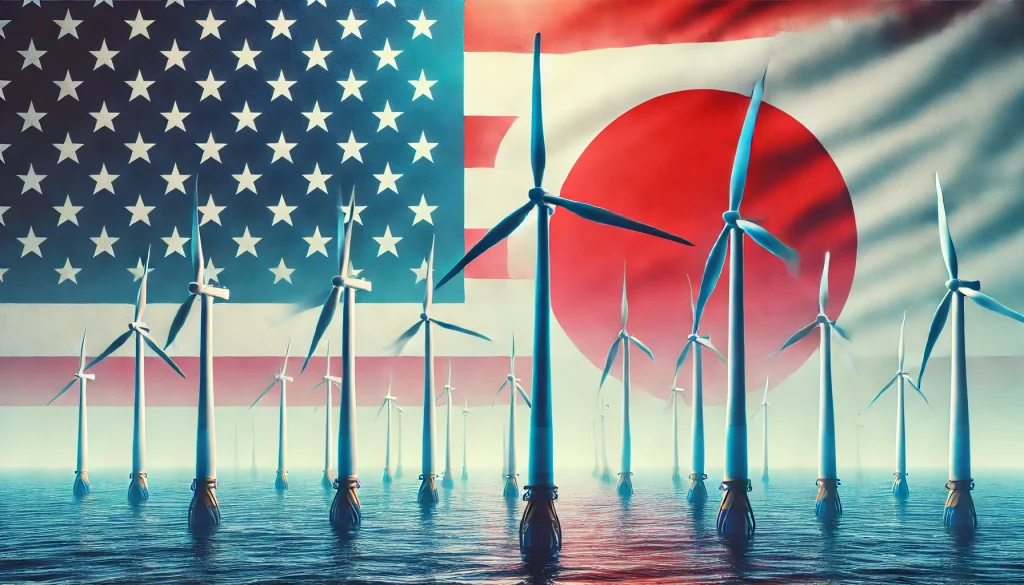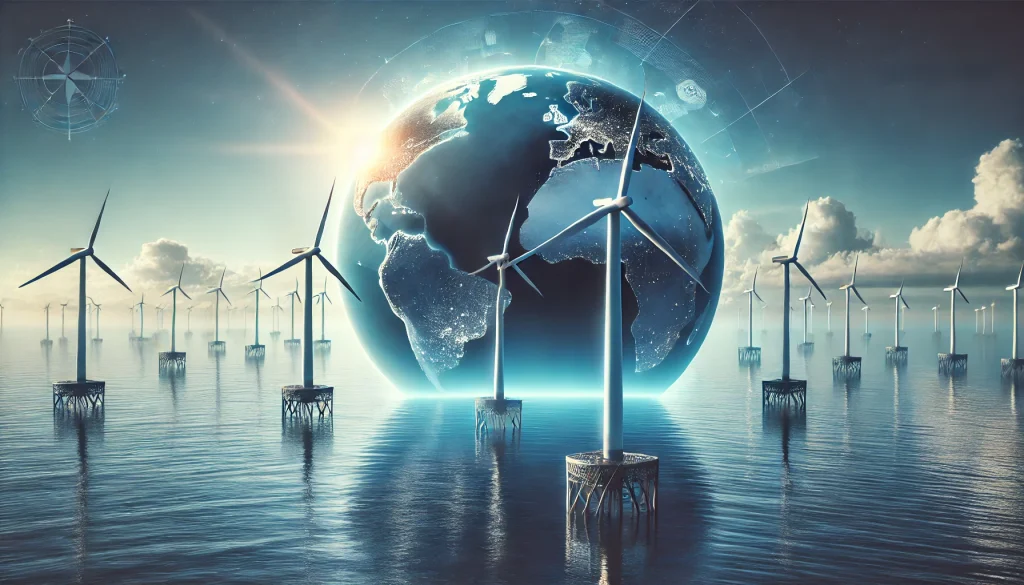On May 2, 2025, a tragic wind turbine blade collapse occurred at Araya Seaside Park in Akita City, claiming the life of an 81-year-old man. Based on currently available reports, we examine the potential causes and implications for wind power safety in Japan.
Overview of the Incident
- Date and Time: Around 10:20 AM, May 2, 2025
- Location: Araya Seaside Park, Araya Town, Akita City
- Fatality: 81-year-old male pedestrian
- Turbine Specifications: 119m height, 82m rotor diameter, operational since November 2009, manufactured by Enercon (Germany)
- Previous Incident: A lightning strike damaged a blade in December 2010
Possible Causes
1. Material Fatigue Due to Aging
A local wind energy expert in Akita Prefecture suggested that parts of the blade may have deteriorated over time due to metal fatigue. (Asahi Shimbun)
2. Residual Damage from Past Lightning Strike
There is a possibility that the damage caused by the 2010 lightning strike was not fully repaired. According to Toru Nagao, Chair of the Japan Wind Energy Association, “We inspect the suspected strike point, but fine damage may be overlooked.” (TV Asahi News)
3. Stress from Strong Winds
At 7:52 AM on the day of the accident, Akita City recorded a peak wind gust of 23.0 meters per second—below the turbine’s shutdown threshold of 25 m/s—suggesting that wind-induced stress could have contributed. (Asahi Shimbun)
Lightning Protection Design
Wind turbine blades are typically equipped with a lightning receptor and down conductor to safely channel lightning currents to the ground and prevent damage. These systems are designed under IEC international standards, which assume a maximum lightning energy of 600 coulombs per strike.
A Unique Challenge in Japan: Winter Lightning
Along the Sea of Japan coast, particularly in winter, “winter lightning” poses a unique challenge. These strikes can exceed the standard 600 C energy threshold, potentially overwhelming existing blade protection systems and leading to severe damage.
Reexamining Safety Measures
This incident highlights the urgent need to review safety standards and inspection regimes for wind turbines in Japan. For turbines with a known damage history, frequent detailed inspections and preventive part replacements are critical.
While Japan has some guidelines on turbine proximity to public areas, there is no unified national legal regulation. Instead, developers often apply reference-based safety distances, such as:
Common Safety Distance Guidelines in Japan
| Category | Typical Distance | Notes |
|---|---|---|
| Falling Object Buffer | 1.5–3 times rotor diameter (D) from tower center | Varies by manufacturer and local authority. Vestas and GE recommend 3D. |
| Distance to Houses, Roads, and Public Facilities | 100–300 meters | Takes into account noise, low-frequency sound, ice throw, and blade debris risks. |
| Local Ordinances | Varies by municipality | E.g., Hokkaido and Akita have resident-focused guidelines. |
Some developers voluntarily adopt wider safety margins to avoid conflicts with local communities. In Japan, distance and safety measures are typically assessed during the installation permit process and Environmental Impact Assessment (EIA), often on a case-by-case basis.
Global manufacturers such as Vestas and Siemens Gamesa also define “Exclusion Zones” to indicate areas at risk of blade detachment or throw, which are then used by developers to set minimum safety distances.
Conclusion
The tragic blade accident in Akita may have resulted from a combination of factors. Ensuring wind turbine safety requires not only technical safeguards but also context-specific risk management. Continuous monitoring and proactive maintenance are essential to prevent such events.
As renewable energy adoption accelerates in Japan, strengthening safety protocols and adapting to local environmental challenges—such as winter lightning—are vital. Ongoing research, technology updates, and regulatory revisions will be key to building a safer and more resilient wind power infrastructure.
📚 Want to dive deeper? Explore J-WIND Times’ featured categories!
🔍 Market Trends & Analysis – Stay ahead with insights into the latest developments shaping renewable energy investments.
🏛 Policy & Regulation – From auction schemes to FIP reform, get a clear understanding of Japan’s evolving energy rules.
⚙️ Projects – Discover the progress and behind-the-scenes of offshore wind projects across Japan.
💡 Technology & Innovation – From next-gen turbines to floating foundations, explore the cutting edge of offshore wind tech.



